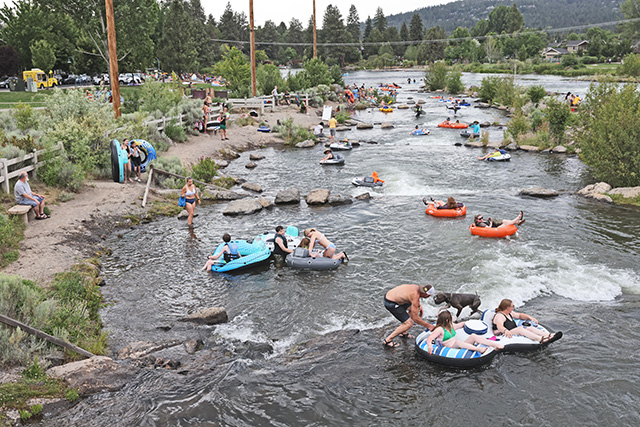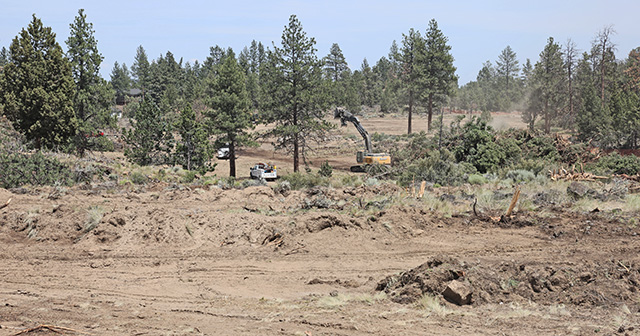Not for web
Published 9:00 pm Saturday, August 26, 2023

- This NASA satellite photo shows how after the Kakhovka Dam in Ukraine was breached on June 6, 2023, the canals once fed by the reservoir have run dry.
KOVEL, Ukraine — Ihor Chaika, the mayor of Kovel, Ukraine, interrupts our translator when she repeated, in English, that the mayor wishes to thank the American people and President Biden for all their support.
“The American people and President Biden and the American taxpayers!” Chaika says. Complaints that the Ukrainians are ingrates regarding U.S. military support never held much water, but it’s good to hear the mayor’s words anyway.
Kovel is a small city of 67,000, roughly the population of Oshkosh, Wis., in northwestern Ukraine, about 40 miles from the border with Belarus. In September 2022, as Ukraine fought against Russia’s invading forces, Kovel became the sister city of Chamblee, Ga.
Kovel is not a big city, but 47 of its young men have been killed in action since the war began. Just down the street from city hall is a World War II memorial, where the giant sculpture of a glorious warrior has a tarp over his shield, likely obscuring a now-dated and unpopular hammer and sickle. Alongside it is a newer memorial, with photos of all the war dead from the city, going back to 2014. I’ve heard the point made by several Ukrainians in conversation: The current Russian invasion may have started in February 2022, but the war itself began with the annexation of Crimea in February 2014.
Geographically, Kovel is far from the eastern front, but the war’s impact is omnipresent. With many townspeople in the military, almost everyone knows a family that has lost a loved one, and many more that are anxiously awaiting word about those fighting in the east.
Then there’s the threat from above. Last winter, Russia bombed the nearest power station, knocking out electricity in Kovel for two days. Earlier this month, the Russians struck Lutsk, about 45 miles to the southeast. There aren’t many communities in Ukraine where people can plausibly feel safe.
Chaika and his staffers tell me that some days there are no air raid alerts, and some days there are as many as three or four. They said alarms occur more often at night, but as I was about to learn shortly, they can happen in the middle of the day as well.
Kovel became a way station for refugees from eastern Ukraine who were mostly headed to Poland; the mayor said 5,000 refugees stayed one night in the city’s large railway station.
In an interview in his office, Chaika describes how he and the city government have had to tackle the problems as they arose. While many mothers and children left Ukraine to seek safety elsewhere when the invasion began, plenty of others stayed behind; getting children back into schools in the spring of 2022 was a top priority. A related challenge: building bomb shelters or finding facilities that could function as bomb shelters near all of Kovel’s schools. The city spent about $1 million, the mayor says, to build its biggest shelter, which can provide refuge for about 1,300 people.
Chaika, a middle-aged man with piercing blue eyes and a demeanor that fits these serious times, was elected in 2020. His tenure has been marked by the pandemic, followed by the Russian invasion. Did he enjoy a brief respite in between? “We didn’t notice any happy times,” he says, adding, “unfortunately, there’s no vaccine for the war.”
The hardest part of his job, he says, has been meeting with family members of the Kovel’s nearly four dozen slain soldiers.
Asked if there’s anything he’d like for Americans to know, he responds, “We believe we are going to win the war.”
After our interview, Chaika brings me to the city hall’s lobby, where he shows me a damaged flag that he says was flown over Snake Island in the Black Sea, site of the famous “Russian warship, go f- — yourself” incident, when a Ukrainian soldier rejected Russian surrender demands. The Ukrainian soldiers eventually did surrender, and were later freed in a prisoner exchange. One of them was from Kovel, the mayor says, explaining the flag’s presence there.
While Chaika is showing me the flag, an air raid siren goes off. It’s the first one I’ve heard since entering the country only the day before. I’ve been told that when a threat is detected, air raid sirens are activated across an entire oblast, roughly the equivalent of a U.S. state. So the immediate danger isn’t clear, but staying cool isn’t easy.
But the people around me react like it’s a car alarm going off in the middle of the night: no panic or even much movement in the direction of shelters. In the past year and half, Ukrainians have been forced to adapt to a lot. They appear resolved to endure much more.







